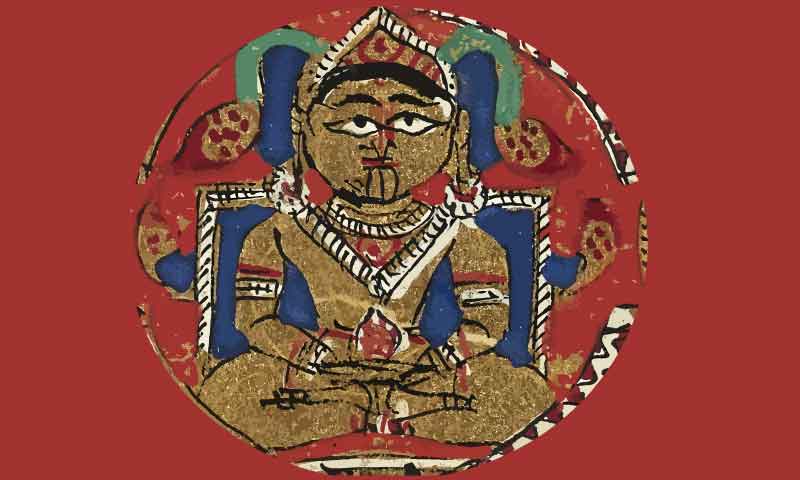
Five Bodies and Eight Vargnas

A liberated soul does not have a material body, mind, speech, and does not breathe. The soul is totally free from all karmas. It merely exists in Moksha in the permanent blissful state.
As far as a worldly soul is concerned it possesses a material body along with some other types of bodies. These bodies are made up from different types of varganas (matters). Jainism explains that eight types of vargana exist in the universe. Every space in the universe is filled with these vargana. When five of the eight vargana when attach to the worldly soul they create five different bodies. The remaining three vargana provide three different functions to the material body.
The eight Vargnas (matters)
- Audaric vargana - creates the physical body of the living being
- Tejas vargana - creates the Tejas body to the living being which provides heat and digestion power to the audaric body.
- Karman vargana - creates Karmic or Causal body
- Aharac vargana - creates Aharac body, which is very small in size and is possessed by some unique soul
- Vaikriya vargana - creates Vaikriya body, which can be converted into very small or large in size
- Breathing vargana- provides breathing
- Mind vargana - provides mind for thinking
- Speech vargana - provides speech
The five bodies
1. Audaric body - The body that we see from the outside (Bahya Sthula Sharira) is called Audaric body. It is made up of Audaric vargna. A person can not be liberated without the help of this body. Hence it is the most important body of the human being. At the time of death, the soul leaves this body behind.
2. Tejas body -This body is made up of Tejas vargna. This body is responsible for digestion, heat, etc. in the Audaric body. At the time of death, it accompanies the soul and helps to create a new Audaric body for the soul.
3. Karmic/Causal Body (Karmana Sharira) - The karmic matter that covers the soul is called karmic body. It changes every moment because new karma is continuously attached to the soul due to activities of body, mind, and speech. At the time of death, the soul is accompanied by this body for the next birth. It leaves the present physical (Audaric) body behind. The karmic body along with tejas body forms the basis of the other newly produced audaric body. It also provides the fruits of living being's past action when due.
4. Aharac body - This body is possessed by some special souls. Aharac body is very small in size. These souls put on this body to travel far distant places. Sometimes monks who possess this body can travel to the other part of the universe (ex. Mahavideha Kshetra) to visit a Tirthankara to remove their doubts about soul, karma etc. It is said that Achaurya Shri Kunda Kunda possessed Aharac body. With this body he visited Shri Srimandhar Swami, the present Tirthankara of the Mahavideha Kshetra. He removed his doubt about soul and matter substances.
5. Vaikriya body - This body can be obtained by human being by practicing yoga, meditation, etc. With this body one can transform his body into a very small or a large size. The heavenly beings and hellish beings possess this body by birth.
All worldly souls possess three bodies (Audaric, Tejas, and Karmic) and some unique soul may possess additional one or two bodies.
Suggestions for Further Reading
- Twelve Reflections or Bhavanas Of Jain Meditation
- The 12 vows For the Jain Laity and The Monks
- Fourteen Auspicious Dreams of Mother Trishala
- Five Bodies and Eight Vargnas Of Jiva, The Embodied Soul
- Five Great Vows Or Maha Vratas of Jainism
- Six Universal Substances (Dravyas)
- Meaning Of Ashta Prakari Puja
- Nine Tattvas Or Principles of Jainism
- The Akaranga Sutra
- A Treatise On Jainism
- Sacred Literature of Jainism
- The Kalpa Sutra Of Bhadrabahu
- The Ten Virtues of Jain Monks
- Essays On Dharma
- Esoteric Mystic Hinduism
- Introduction to Hinduism
- Hindu Way of Life
- Essays On Karma
- Hindu Rites and Rituals
- The Origin of The Sanskrit Language
- Symbolism in Hinduism
- Essays on The Upanishads
- Concepts of Hinduism
- Essays on Atman
- Hindu Festivals
- Spiritual Practice
- Right Living
- Yoga of Sorrow
- Happiness
- Mental Health
- Concepts of Buddhism
- General Essays
Source: Five Bodies and Eight Vargnas (F30) 01/19/93 5BODIES.A01 Complied by Pravin K. Shah, Jain Study Center of North Carolina